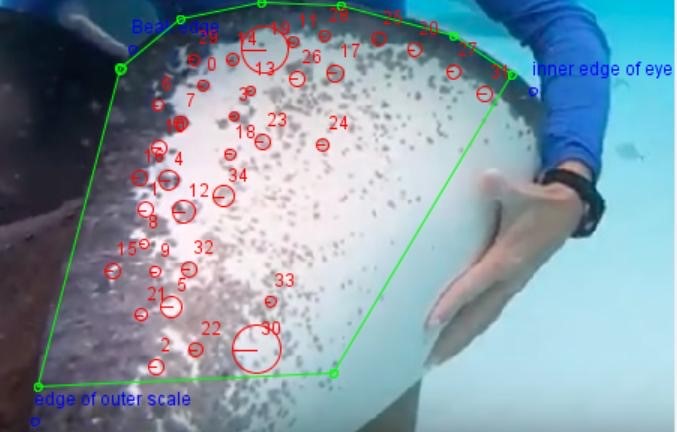A new Photo ID Project led by students at Guy Harvey Research Institute and University of Rhode Island will provide resident stingrays at the Stingray City Sandbar in Grand Cayman with a “natural tag” in addition to their PIT (Passive Integrative Transponder) tags.
As part of the GHOF Biannual Southern Stingray Census, the research team records photos and video of each stingray after regular processing in order to build a photographic database of all inhabitants of the site.
This method will expand the GHOFs ability to monitor the aggregation of Southern Stingrays at the Stingray City Sandbar by allowing the identification of stingrays that may have lost their PIT tag, but are regulars at the sandbar, stingrays that are photographed by someone that doesn't have a PIT tag reader (for example dead or injured rays) and even stingrays that are difficult to catch, but that can be captured on video. In addition, it will allow GHOF to document changes that occur with stingrays over time, such as injuries and color changes.
Similar programs are used to monitor aggregations of other animals that are important for ecotourism such as whale sharks in the Yucatan. It works by inserting video screen shots of individual stingrays into an Interactive, Individual, Identification System, or “I3S Software” that extracts 35 unique points on the area of interest. In this case, the area of interest is the ventral, or underside, of the pectoral wings of each stingray. These identified unique points become the stingray’s “fingerprint”, is documented with the individuals unique PIT tag number, and can be used to visually identify the individual in the future.


